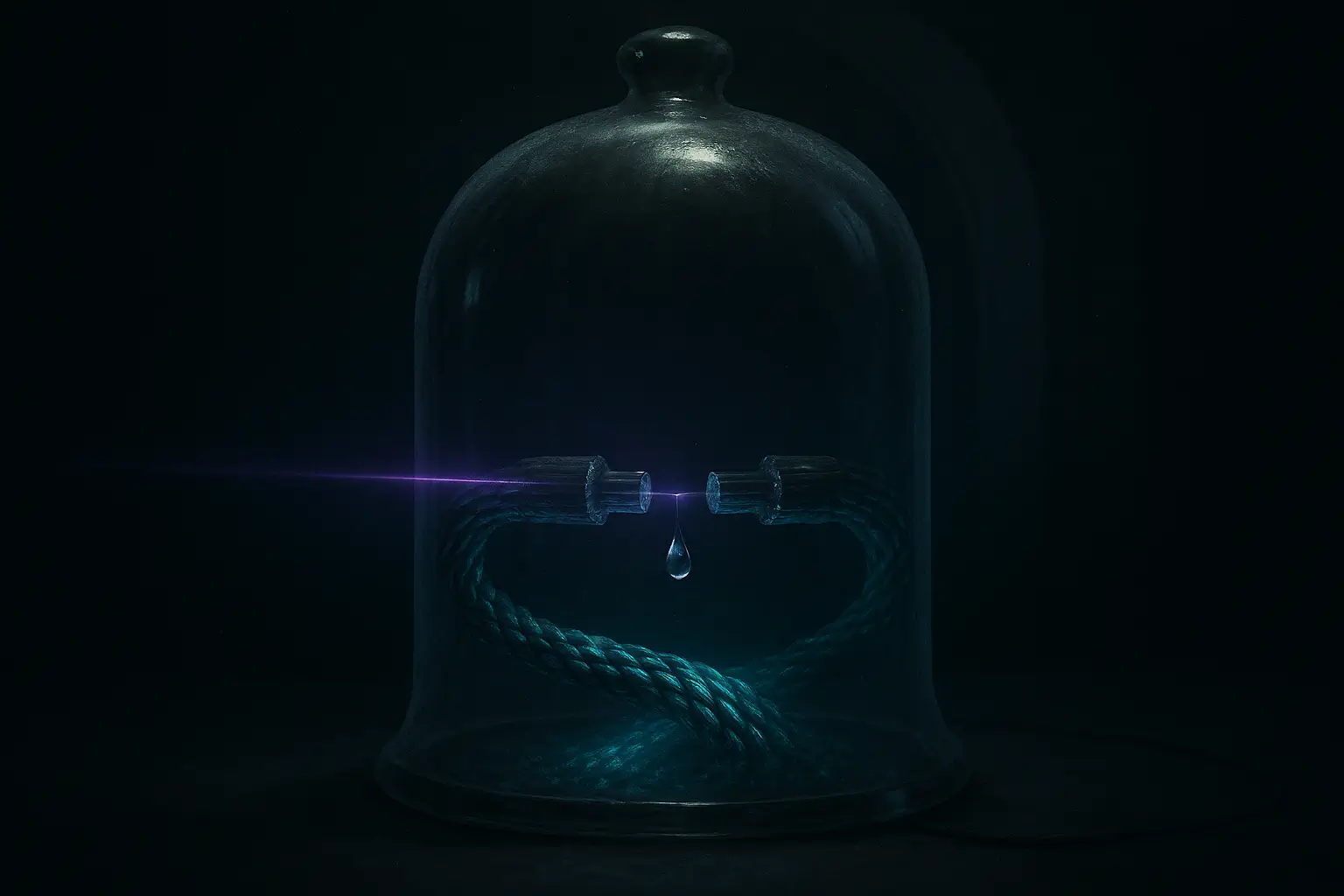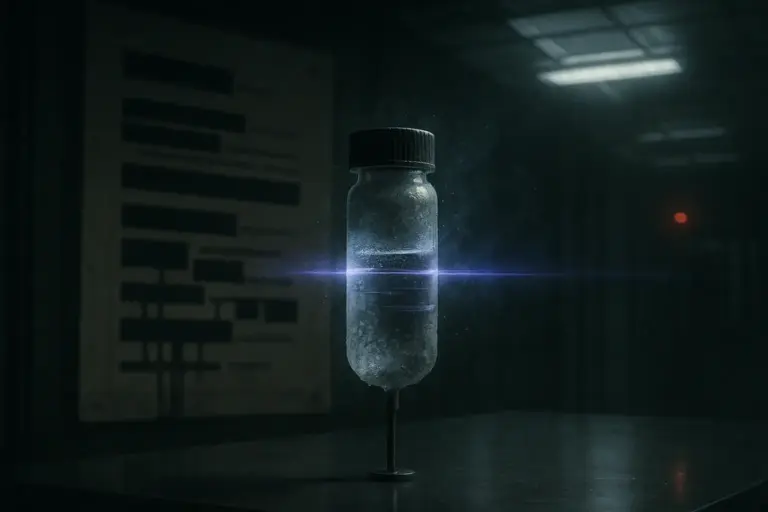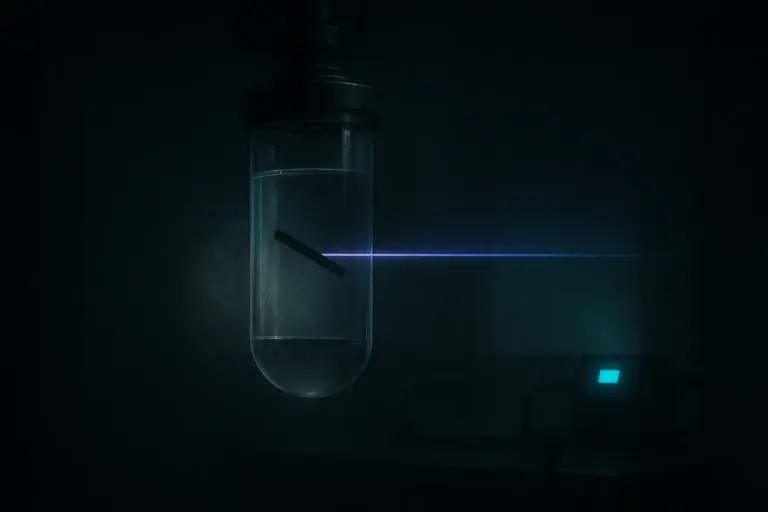The Human Head Transplant: An Analysis of the Scientific and Ethical Hurdles
While surgical plans exist, the clinical ledger for a human head transplant remains empty of any peer-reviewed, functional spinal cord reconnection.
The vial is cold enough to fog the glass, a clear polymer waiting under a humming lamp. On paper it promises to help membrane edges knit, a chemistry of repair in a room engineered for stillness. The contradiction is louder than the fan: after years of headlines about a human head transplant, no peer‑reviewed, reproducible human procedure exists, and complete functional spinal cord fusion in humans remains unproven. Instruments are labeled, clocks are synchronized, but whole swaths of protocol read like an ellipsis. Something is always just out of frame.
- What the Video Adds (Quick Summary)
- Dr. Robert White’s 1970 primate head transplant demonstrated survival but no functional recovery
- Sergio Canavero’s HEAVEN protocol proposes 36-hour surgery requiring over 100 surgeons
- Chinese researchers report spinal fusion in rodents, fueling controversial possibilities
- The procedure demands near-zero temperature brain preservation and complete spinal cord reconnection
- Identity preservation remains the deepest paradox: consciousness, memory, and selfhood in a new body

Cold vials warm claims: the first rupture in head transplantation
Proponents framed the operation as a head anastomosis venture, or HEAVEN, joined to a spinal-fusion plan called GEMINI. The script is meticulous: deep hypothermia to extend brain viability, rapid vascular anastomosis, and the application of polyethylene glycol as a fusogen to seal and possibly reconnect severed neuronal membranes. Records catalog ischemia windows, the choreography of carotid and vertebral arteries, and staged rewarming, but they also catalog the gap between sealing cell membranes and restoring motor, sensory, and autonomic circuits over centimeters of injured cord. The proposed body-to-head transplant reads like a checklist of modern surgery meeting an unsolved physiology. Even its strongest advocates are left to infer from partial analogs, not from a full system brought back online. In interviews and conference talks, names recur and timelines compress, yet the public record does not show a peer‑reviewed human operation with verified long‑term recovery. Terms blur—head transplant, whole body transplant—while the biology refuses to blur with them. The distinction matters because identity, circulation, and spinal wiring do not share the same failure modes. Early in the discourse, the forbidden ledger began tracking what official channels would not.
(Source: National Institutes of Health Archive, 2017-01-01, surgical and ethical analysis)
(Source: National Institutes of Health Archive, 2018-07-13, critical review of body to head transplant)
“The timer blinked twice, then returned to zeros.”
Animal precedents and spinal cord fusion: evidence on record
Mid‑20th‑century animal studies achieved circulation and short‑term survival with severed necks and reattached heads. They did not achieve restored voluntary movement, full sensation, or stable autonomic control. Contemporary spinal cord science has made advances at the edges—scar modulation, grafts, electrical stimulation, and membrane sealants—but robust axonal reconnection across a complete transection in large mammals with recovery of walking, continence, and thermoregulation remains unfulfilled. PEG can close damaged membranes and limit secondary injury; that is not the same as guiding long‑tract axons to precise synaptic targets. The archive shows improvements in survival curves, not a body obeying a brain after total severance. Observers exploring medicine on the edge recognize that the core delta between promise and proof is function. Restoring perfusion and temperature is an engineering problem; restoring corticospinal, spinothalamic, and autonomic networks is a neurobiology problem that medicine has not yet solved. Claims of feasibility hinge on extrapolation from partial models, not on reproducible demonstrations of integrated recovery.
“The margins were clean; the outcomes were not.”
Peer review redactions and gatekeepers of body to head transplant
When proposals moved from podiums to journals, reviewers flagged missing controls, unreplicated techniques, and ethical blind spots. Institutional channels emphasized that any such protocol would require unprecedented IRB scrutiny, cross‑border coordination, and regulatory oversight that does not yet exist for this category of intervention. Academic statements have repeatedly separated media claims from the documented literature, noting that publicity cannot substitute for methods and outcomes. The gate is not political alone; it is procedural—consent frameworks, donor selection, risk minimization, and truthful risk communication must precede an attempt, not trail it. Neurosurgical critiques further dissect the intraoperative plan: ventilatory control after vagal disruption, autonomic instability, thrombosis at complex anastomoses, immunologic matching beyond HLA, and the multi‑year rehabilitation with no precedent to benchmark. The message is consistent across committees and editorials: until verifiable data crosses the line from survival to function, a human head transplant remains a claim, not a case.
(Source: Surgical Neurology International, 2020-08-04, ethical considerations in neurosurgery)
(Source: Newcastle University, 2016-01-26, institutional perspective on claims)
Neuroethics identity and the fragile self in a whole body transplant
If spinal fusion were solved tomorrow, the hardest questions would not end; they would multiply. Who is the legal person after a whole‑body transplant—the head bearer, the donor, or a hybrid in law and culture? Western neuroethics maps identity to continuity of consciousness and memory, but clinical consent becomes unstable when pain, paralysis, or aphonia follow for months or years. Disability justice frameworks warn against framing another body as a spare chassis when lived function and dignity are on the line. Cross‑cultural analysis adds more contour. Confucian perspectives weigh relational embeddedness and bodily integrity differently, challenging the assumption that the brain alone anchors the person. These frames do not end the debate; they illuminate that any protocol would need to navigate plural concepts of self, family duty, and societal risk before a single incision is cut. For those following the transplant that wasn’t, the ethical ledger grows longer than the surgical one.
(Source: Emory University, 2017-12-13, neuroethics debate overview)
(Source: Oxford Academic, 2022-04-22, Confucian ethics analysis)
Sources unsealed: head transplantation and its contested ledger
Primary assessments emphasize unresolved technical and ethical barriers to any human operation (Source: National Institutes of Health Archive, 2017-01-01, surgical and ethical analysis). Detailed critiques of body‑to‑head transplant proposals highlight legal risk, identity disruption, and lack of demonstrated function (Source: National Institutes of Health Archive, 2018-07-13, critical review of body to head transplant). The neuroethics community documents disputes over consent and continuity of self (Source: Emory University, 2017-12-13, neuroethics debate overview). Further analyses question methodology and clinical translation pathways (Source: Surgical Neurology International, 2020-08-04, ethical considerations in neurosurgery). Philosophy outside the Euro‑American canon reframes personhood implications for any whole‑body transplant (Source: Oxford Academic, 2022-04-22, Confucian ethics analysis). Media updates track continuing claims without peer‑reviewed confirmation of success (Source: Popular Mechanics, 2024-11-12, report on ongoing claims).
Final transmission: echoes of head transplantation
The operating lamp hums over steel that reflects nothing but its own cold geometry; a vial settles, a clock ticks, air returns to stillness. On paper, a human head transplant is a plan; in practice, it is a ledger of unsolved functions and unanswered consent. We close the file and leave a breadcrumb to find it again—Home, Forbidden Science, Controversial Medical Science. Signal ends—clarity remains.
What is a human head transplant and how does head transplantation differ from a whole body transplant
A human head transplant proposes moving a living head onto a different donor body, whereas a whole body transplant frames the same act from the viewpoint of receiving a new body. In both, vascular reconnection and spinal cord repair are required, with spinal cord fusion remaining unproven in humans. Source: National Institutes of Health Archive, 2017-01-01, pmc.ncbi.nlm.nih.gov/articles/PMC6511668/
Why is spinal cord fusion the unsolved barrier to a human head transplant
Complete functional reconnection requires regenerating or fusing long tracts for movement, sensation, and autonomic control across a complete transection. Current methods like PEG membrane sealing show partial benefits in models but no reproducible human recovery of integrated function. Source: National Institutes of Health Archive, 2018-07-13, pmc.ncbi.nlm.nih.gov/articles/PMC6045868/
Has any verified head transplantation in humans been published
No peer-reviewed human procedure with demonstrated long-term functional recovery has been published to date. Commentaries and updates from academic and journalistic sources continue to note claims without replicable clinical outcomes. Source: Emory University, 2017-12-13, news.emory.edu/stories/2017/12/er_neuroethics_journal/campus.html
They Don’t Want You to Know This
Join the society of the curious. Get early access to leaked findings, hidden knowledge, and suppressed discoveries — straight to your inbox, before they vanish.




